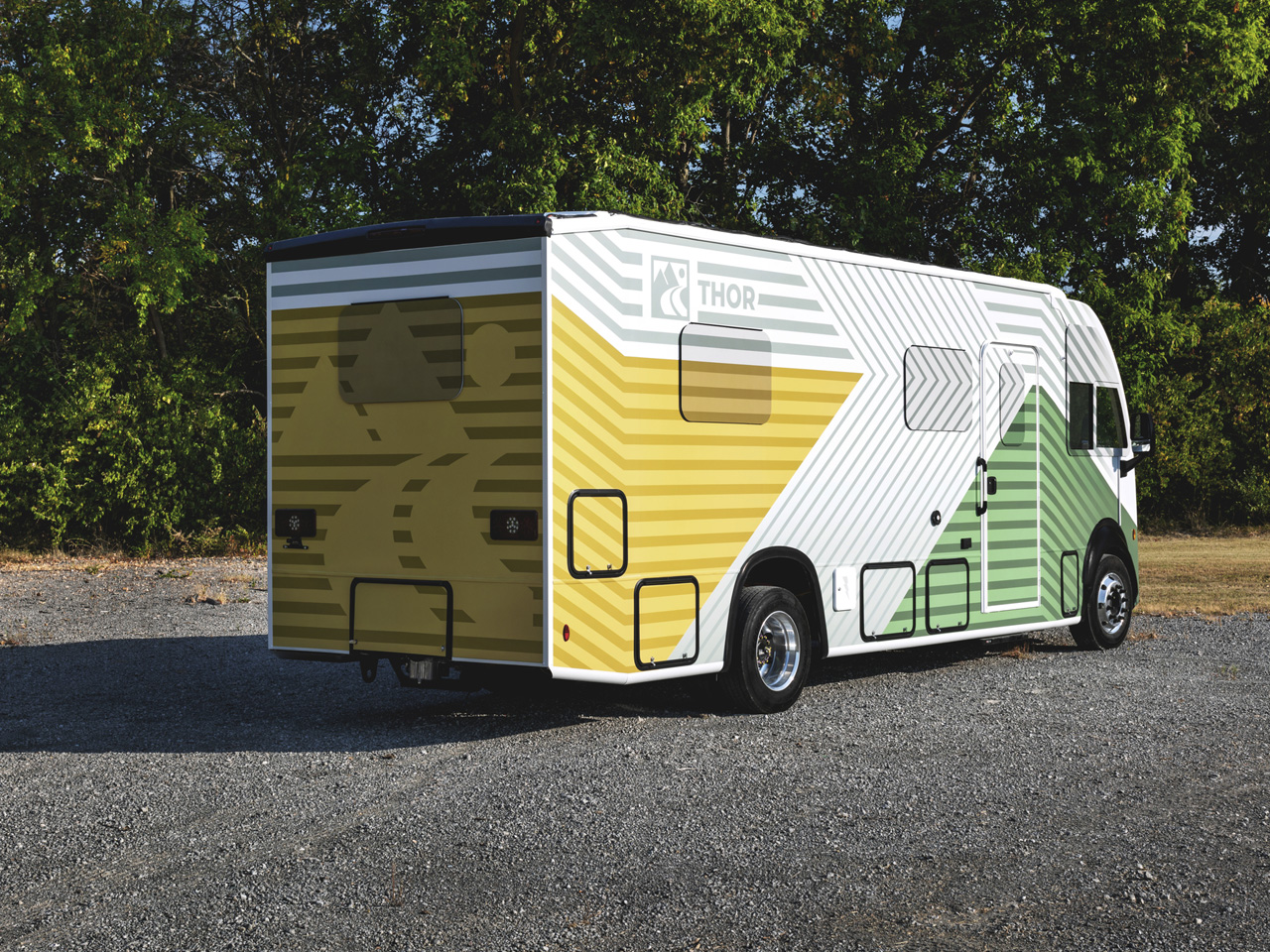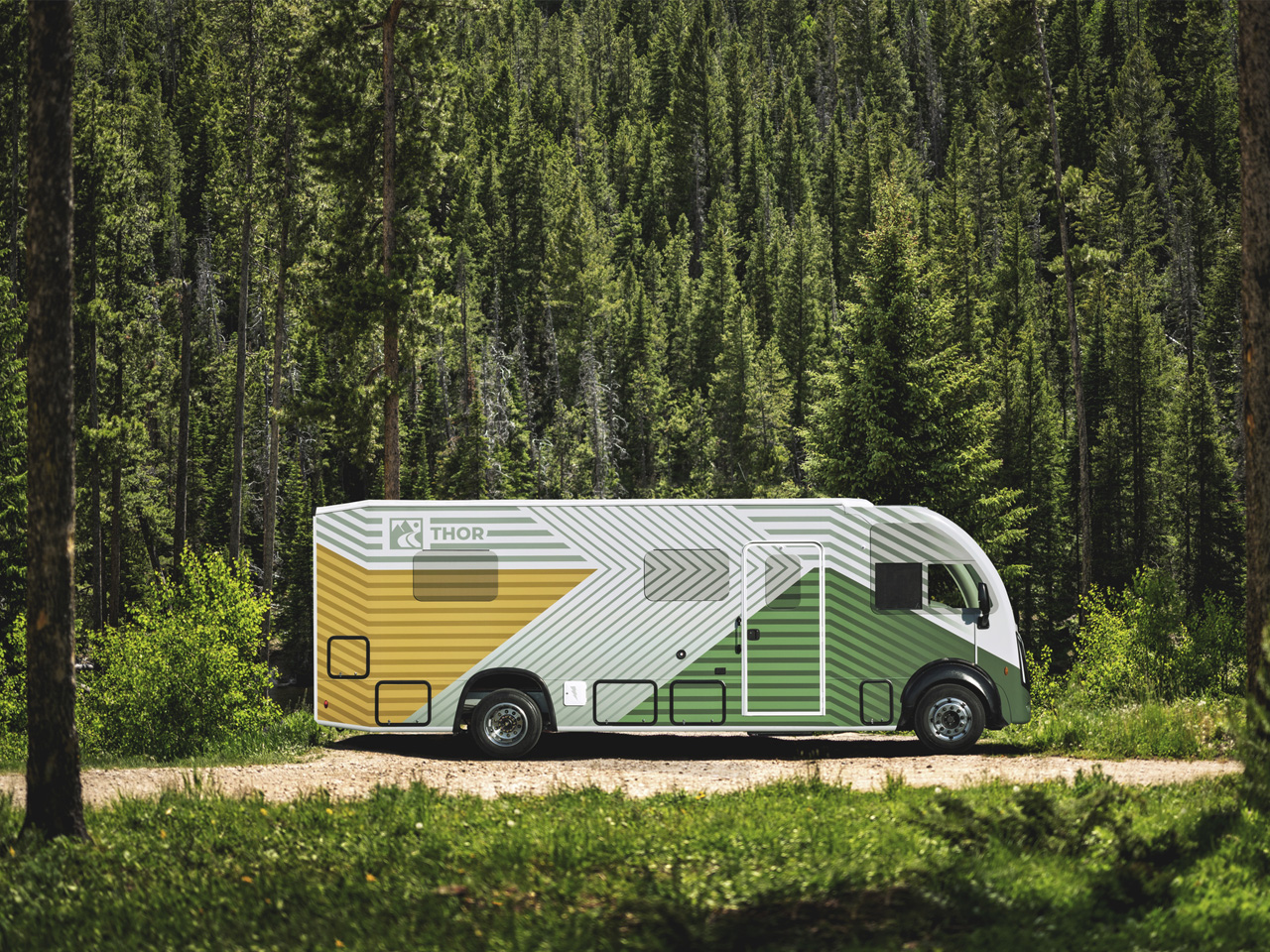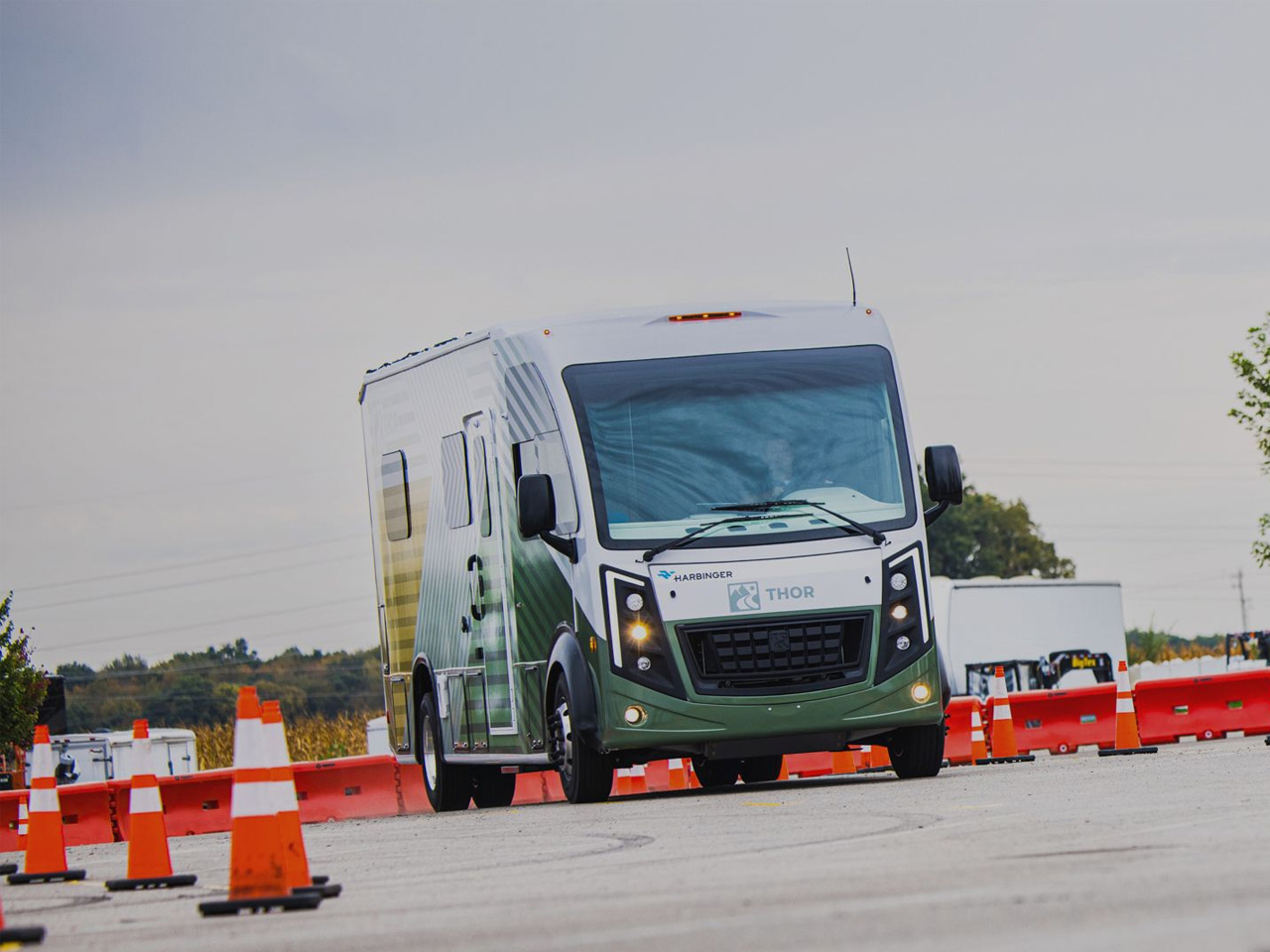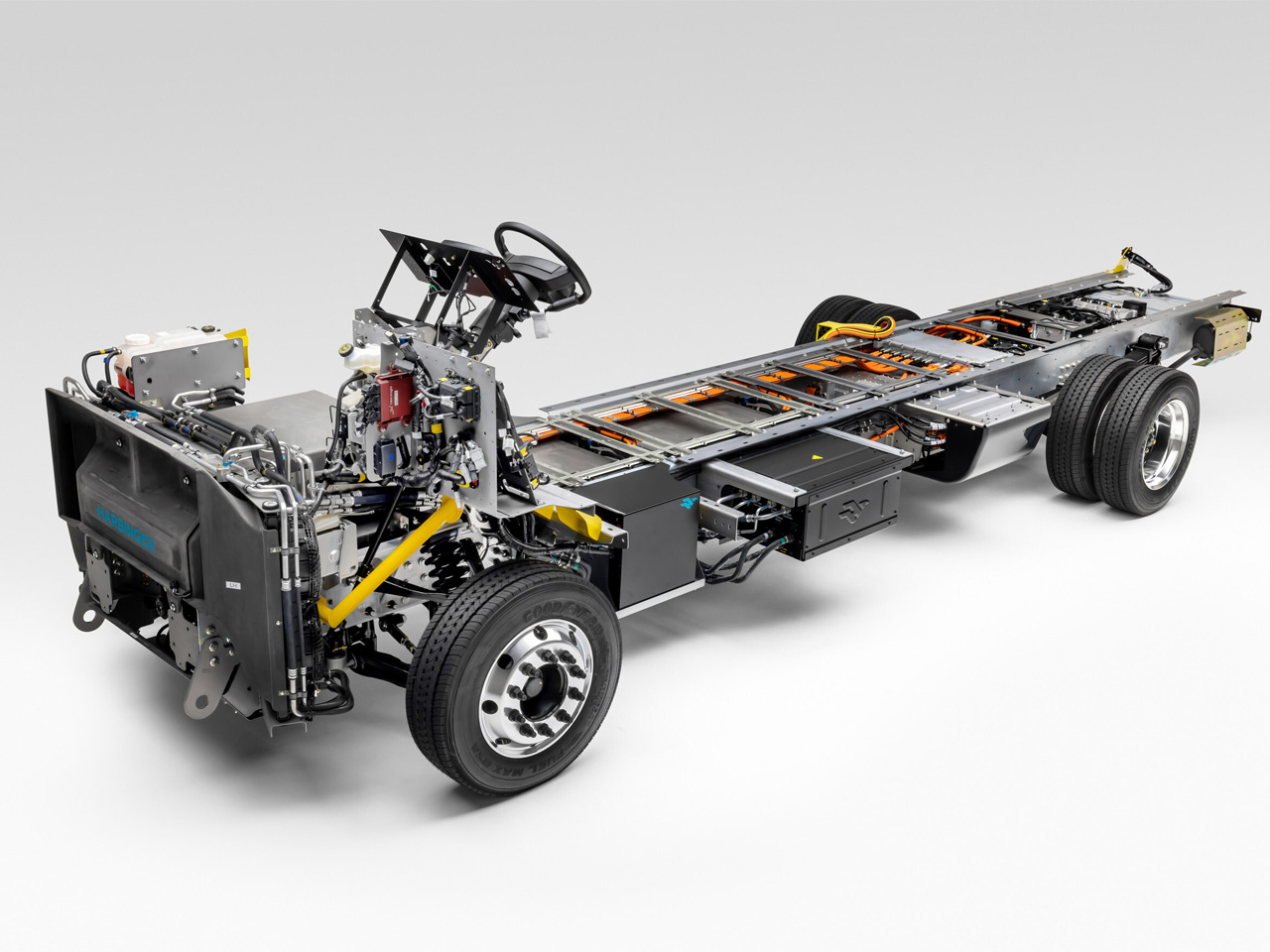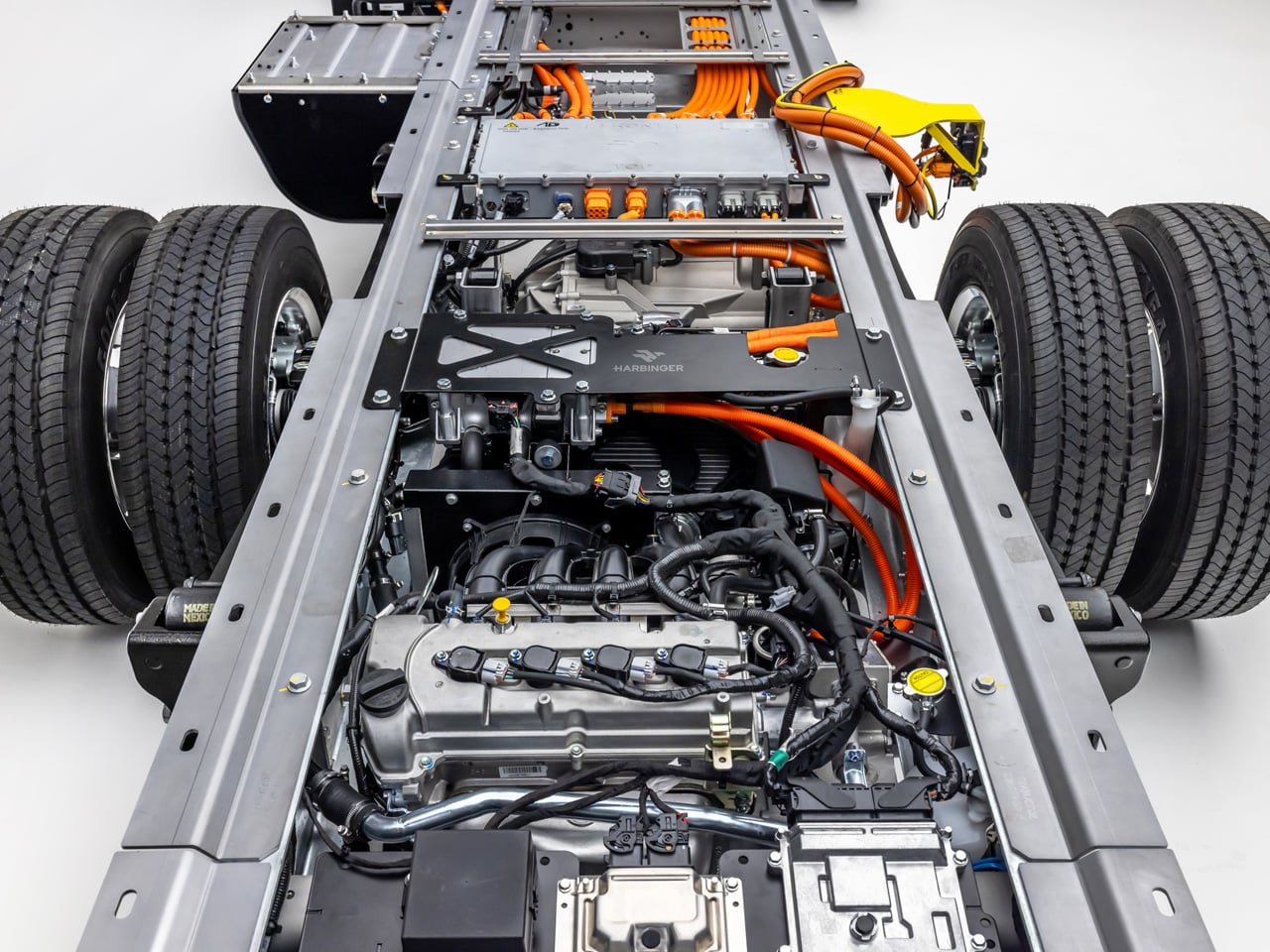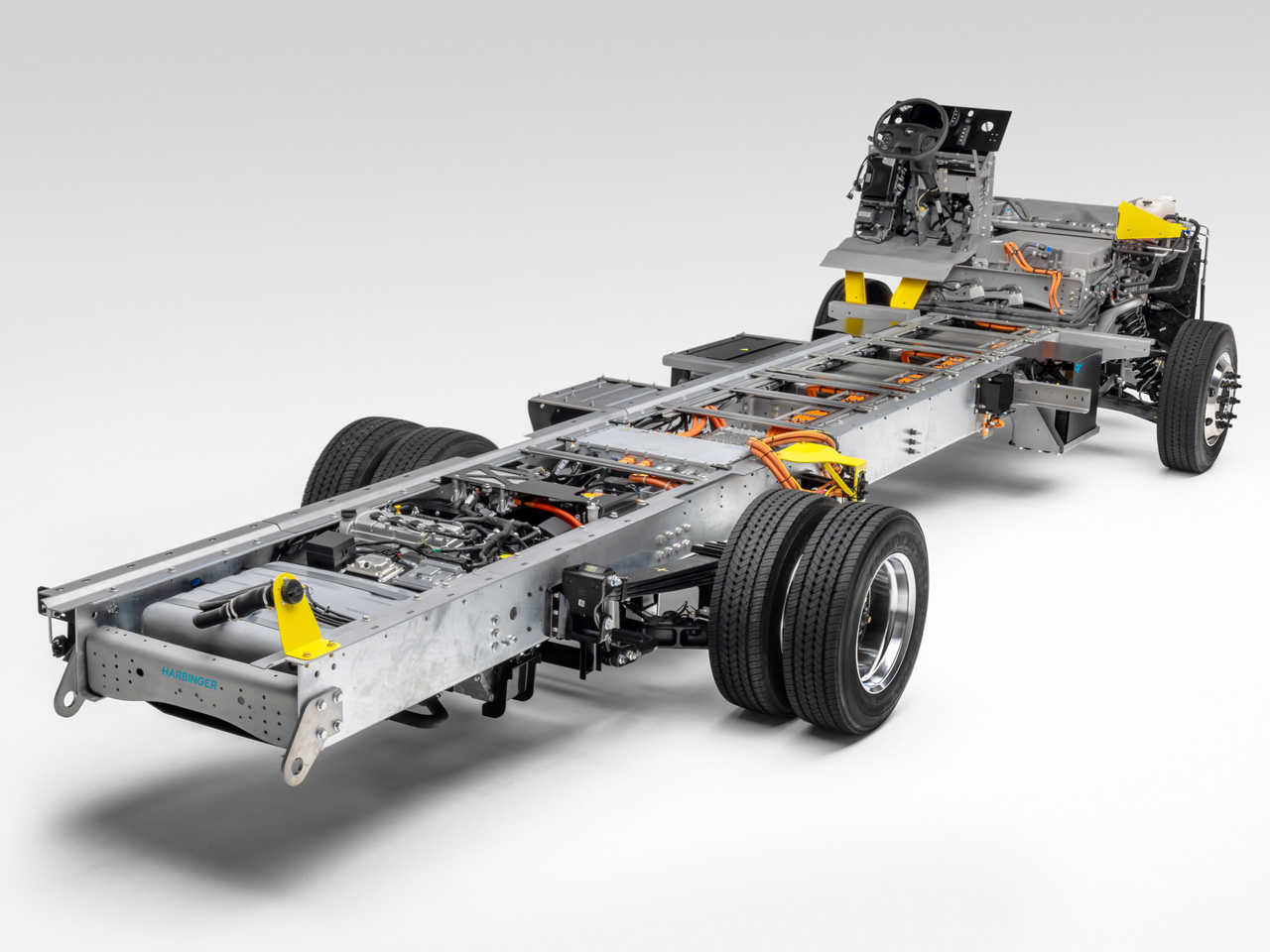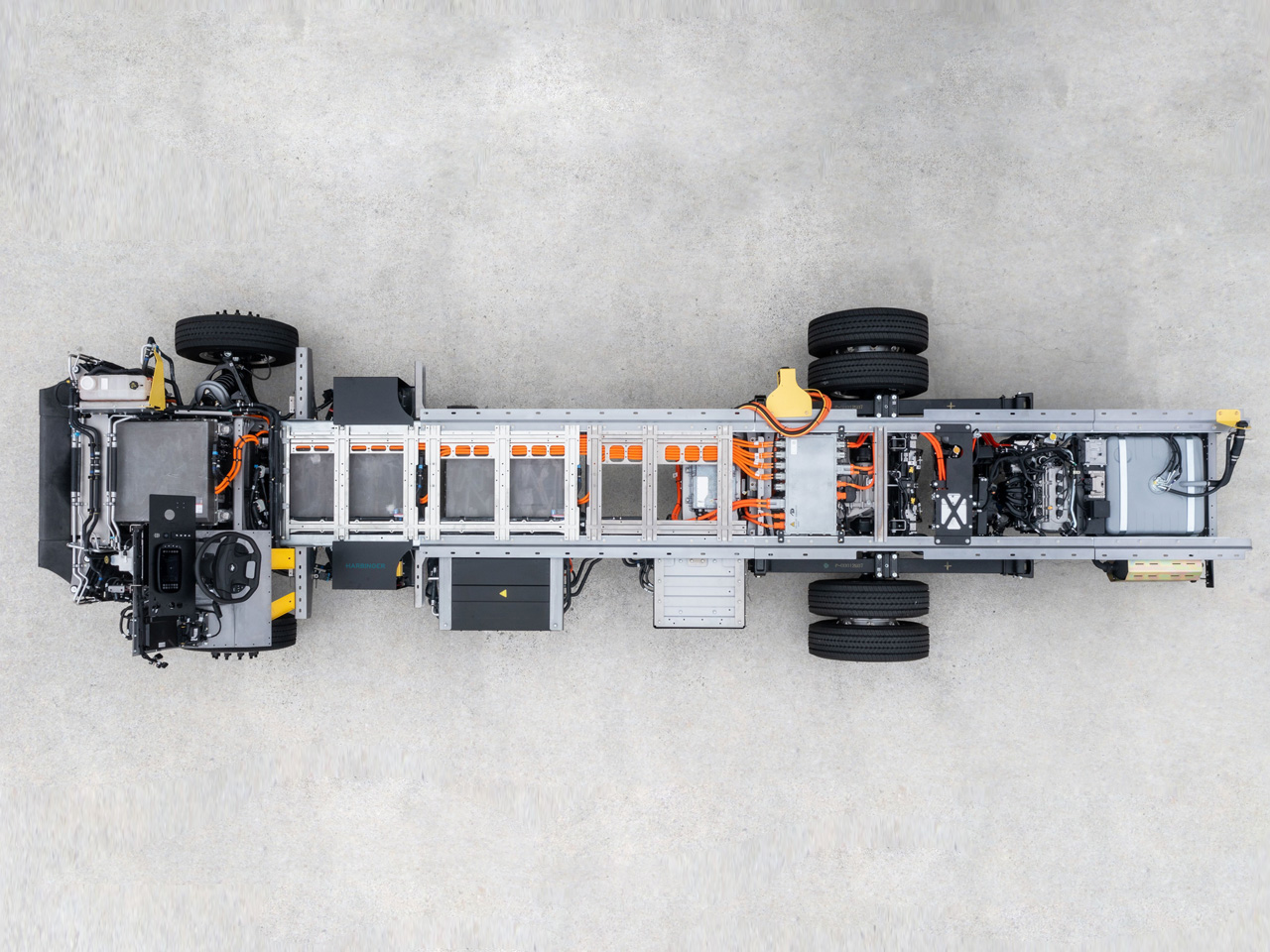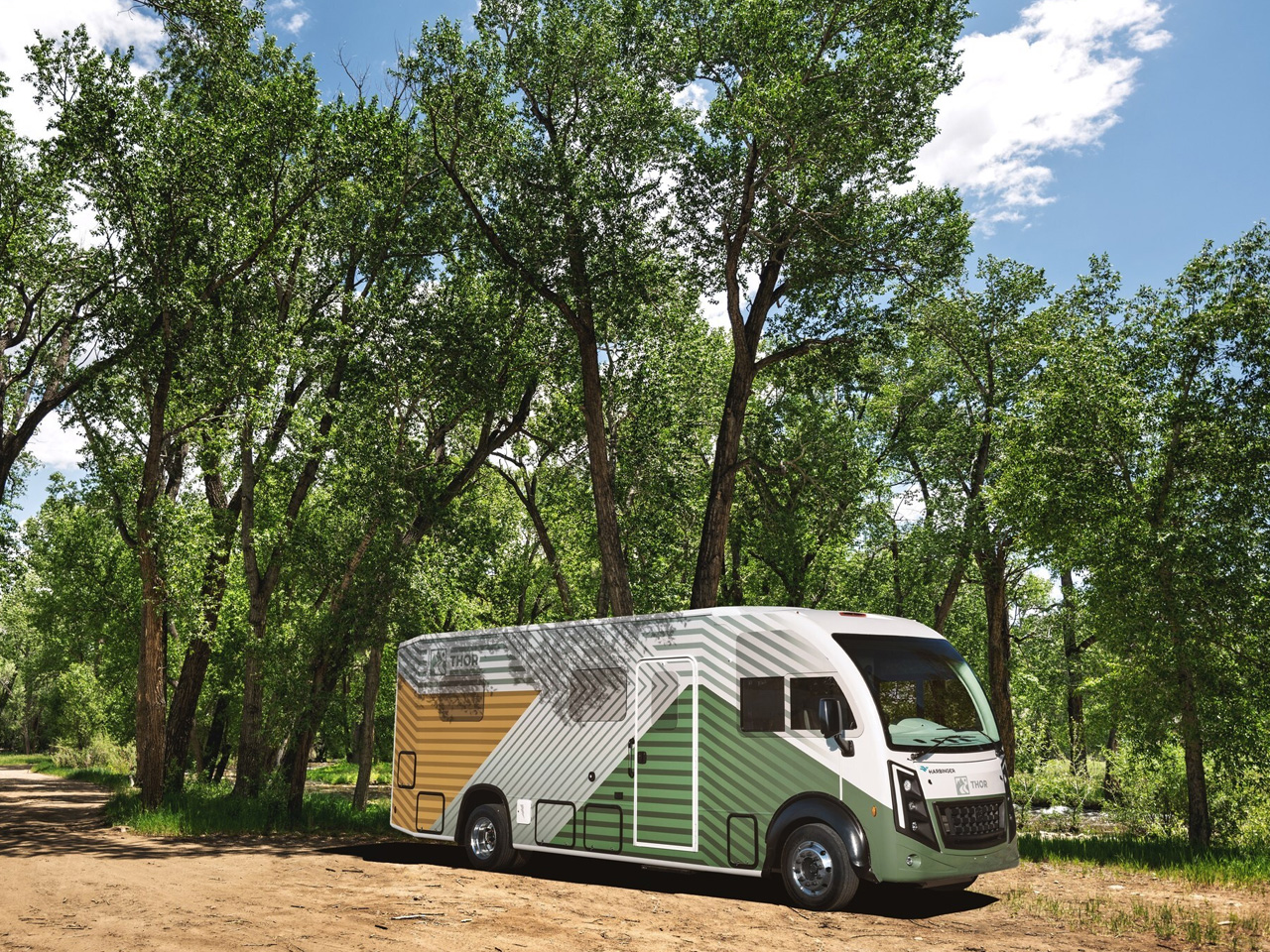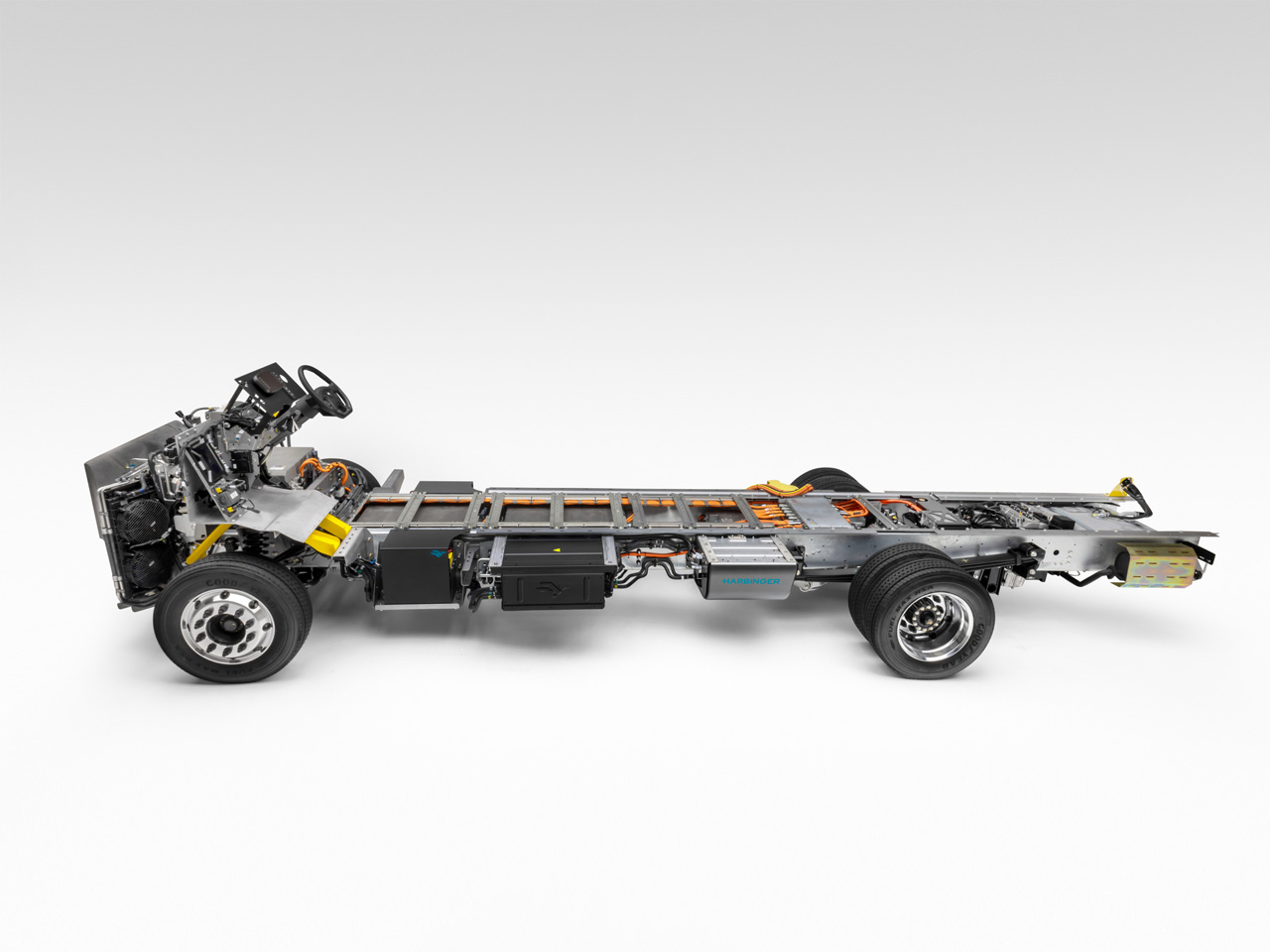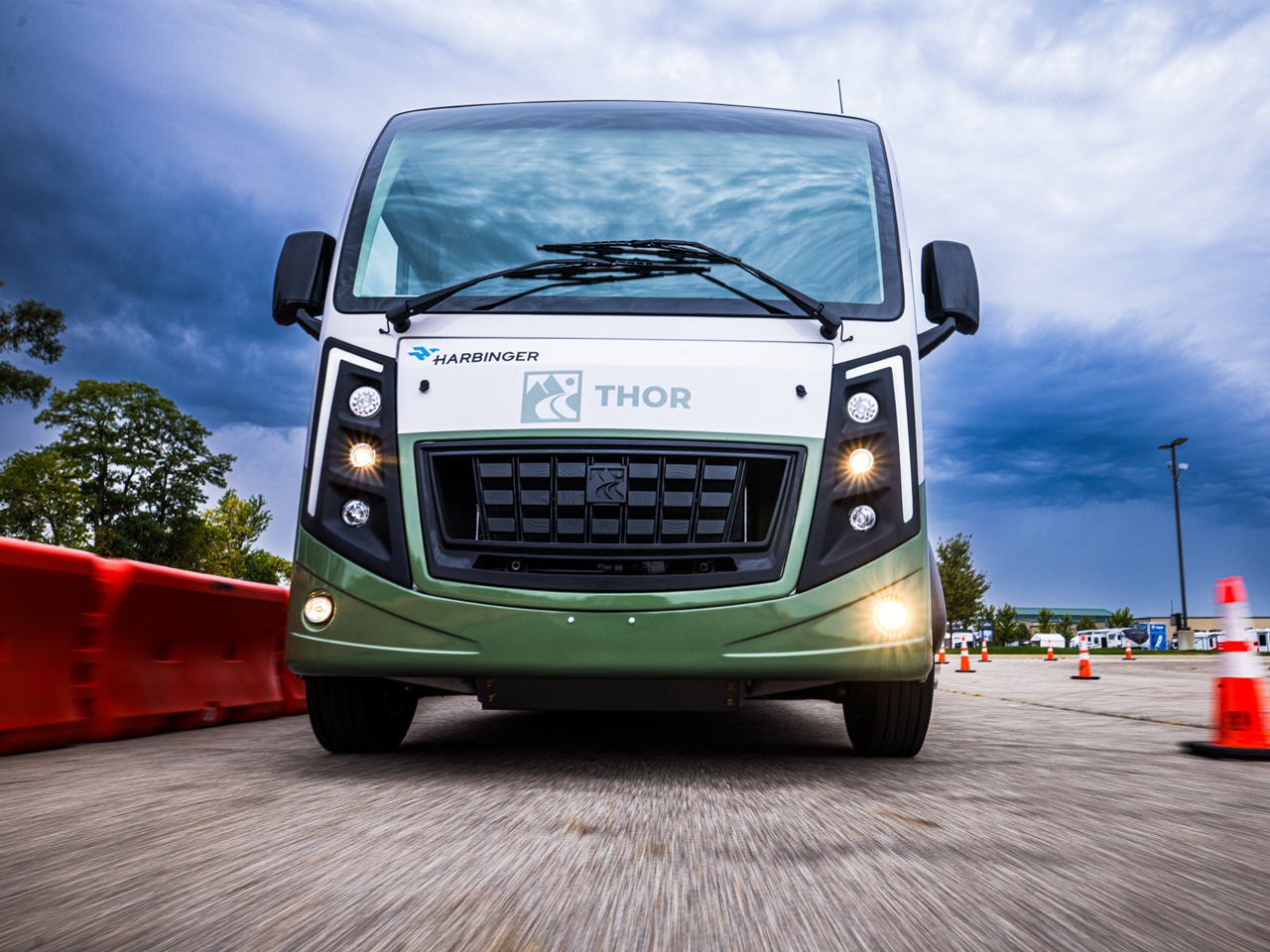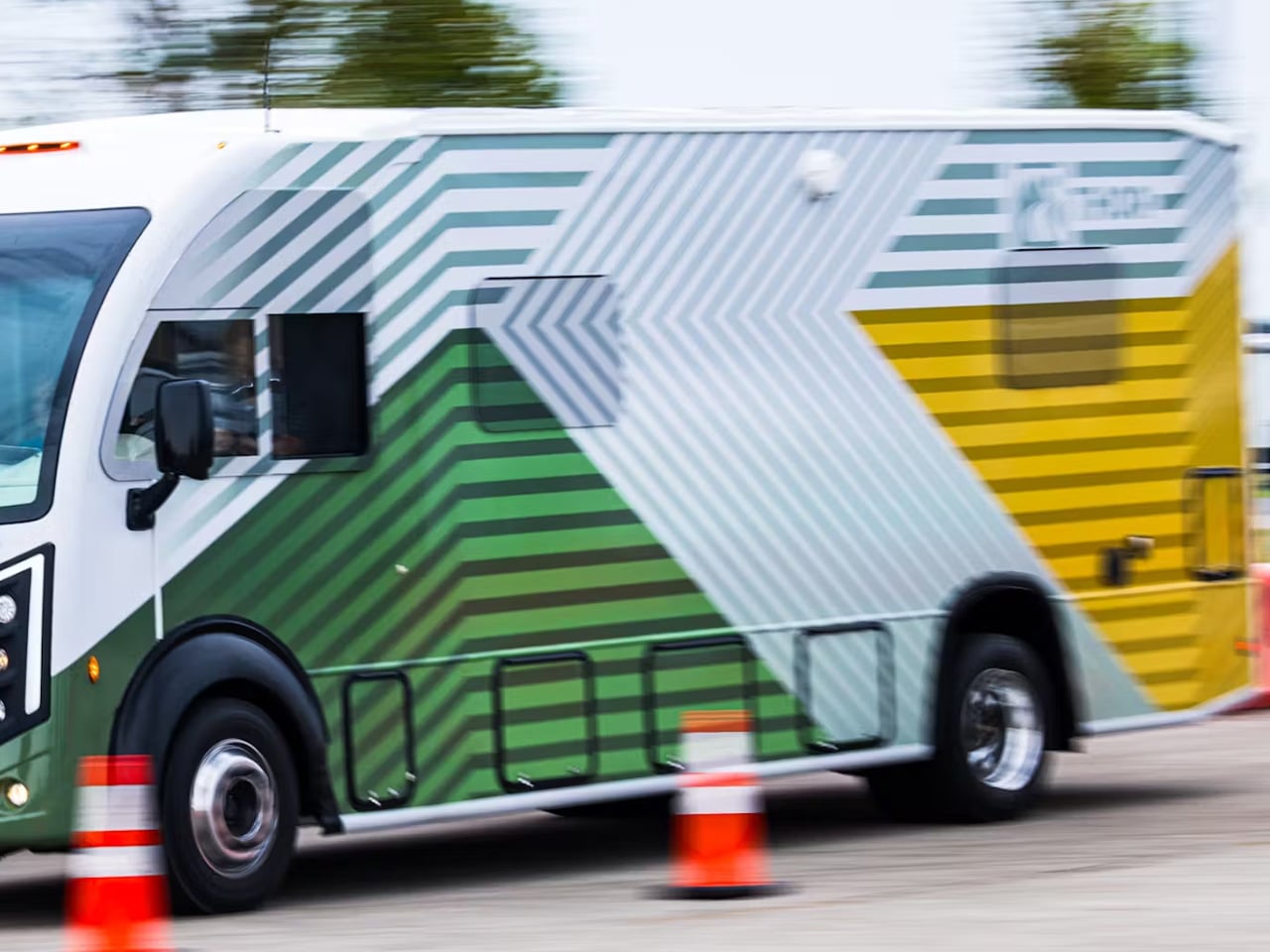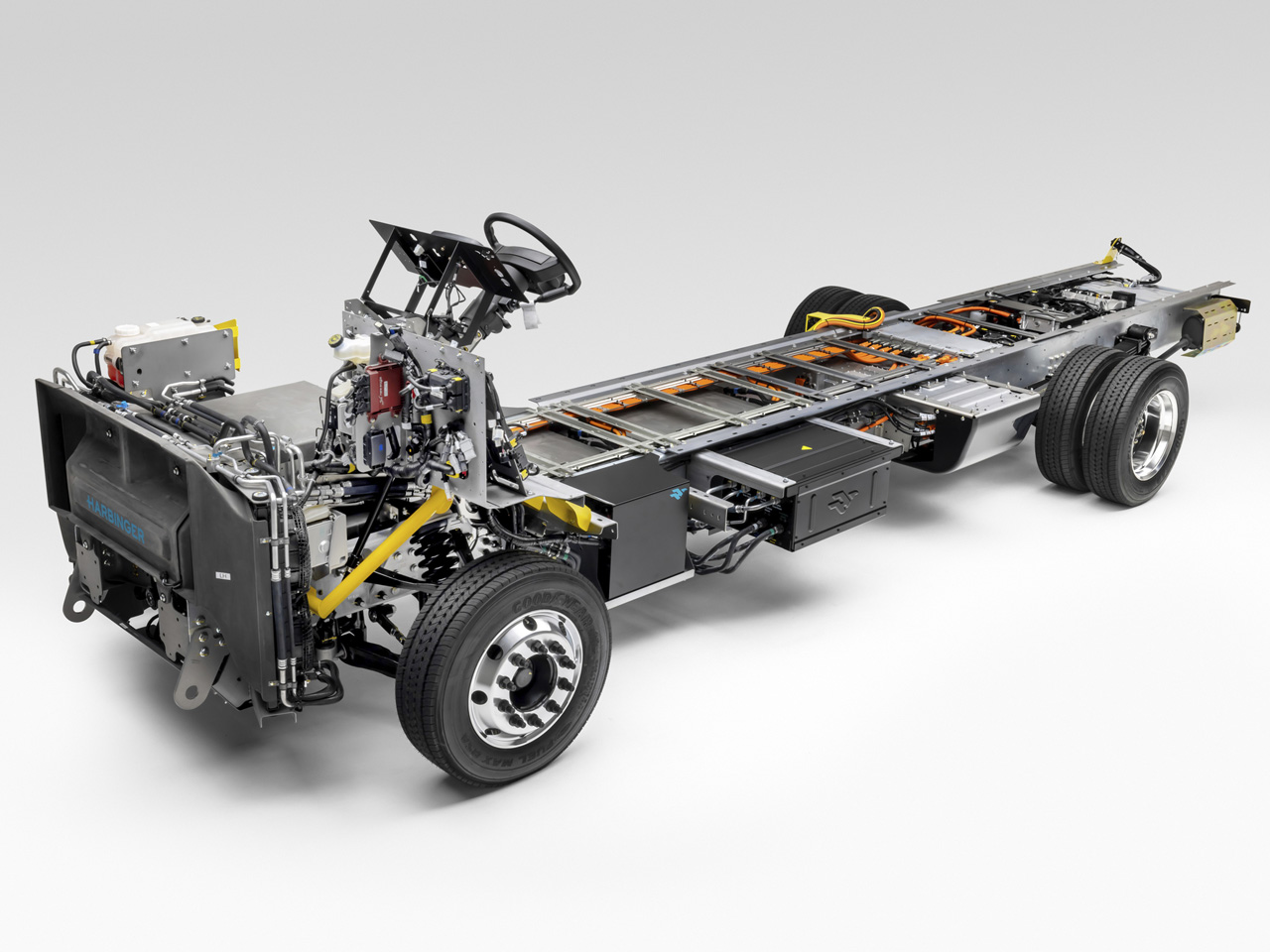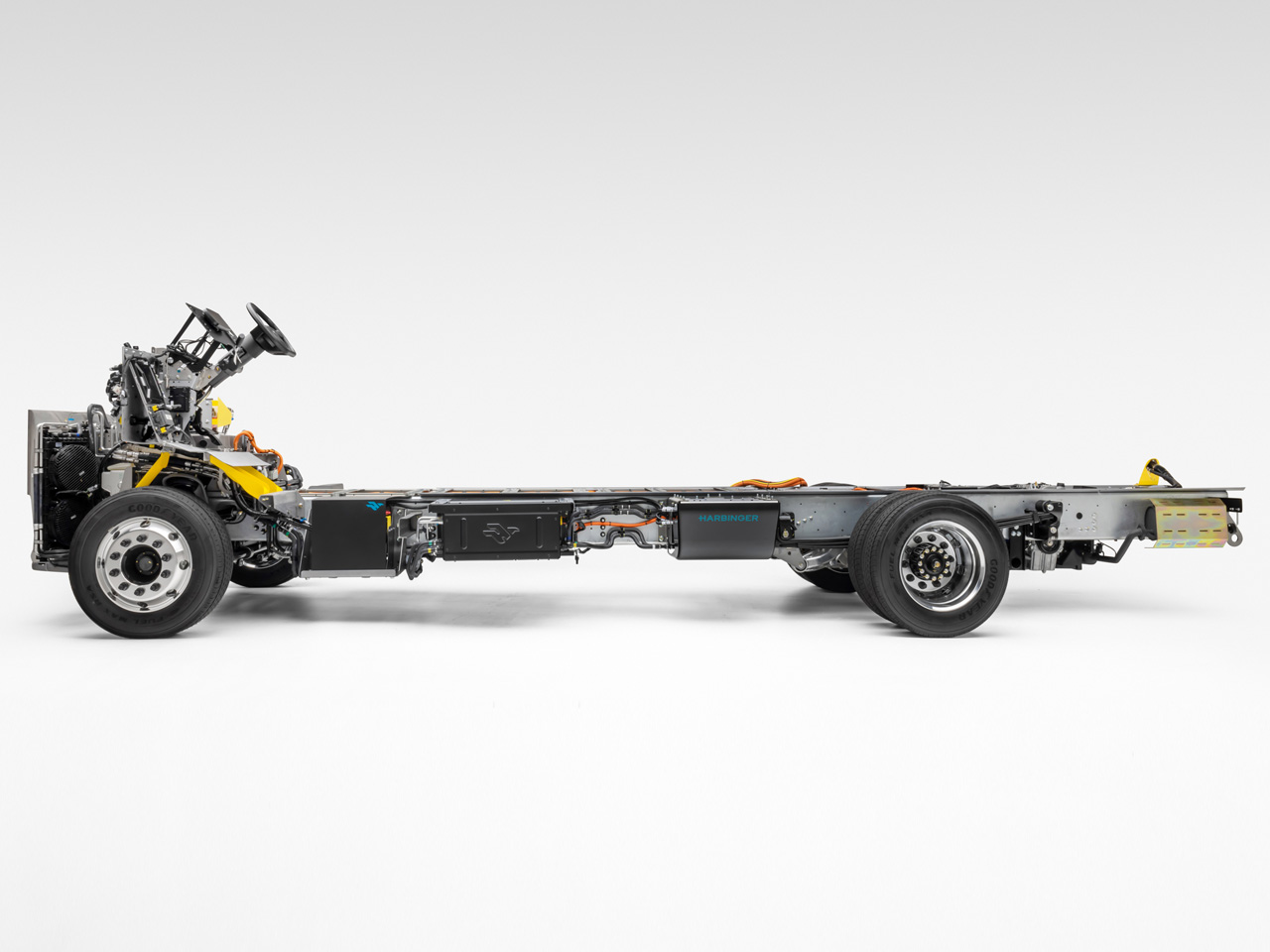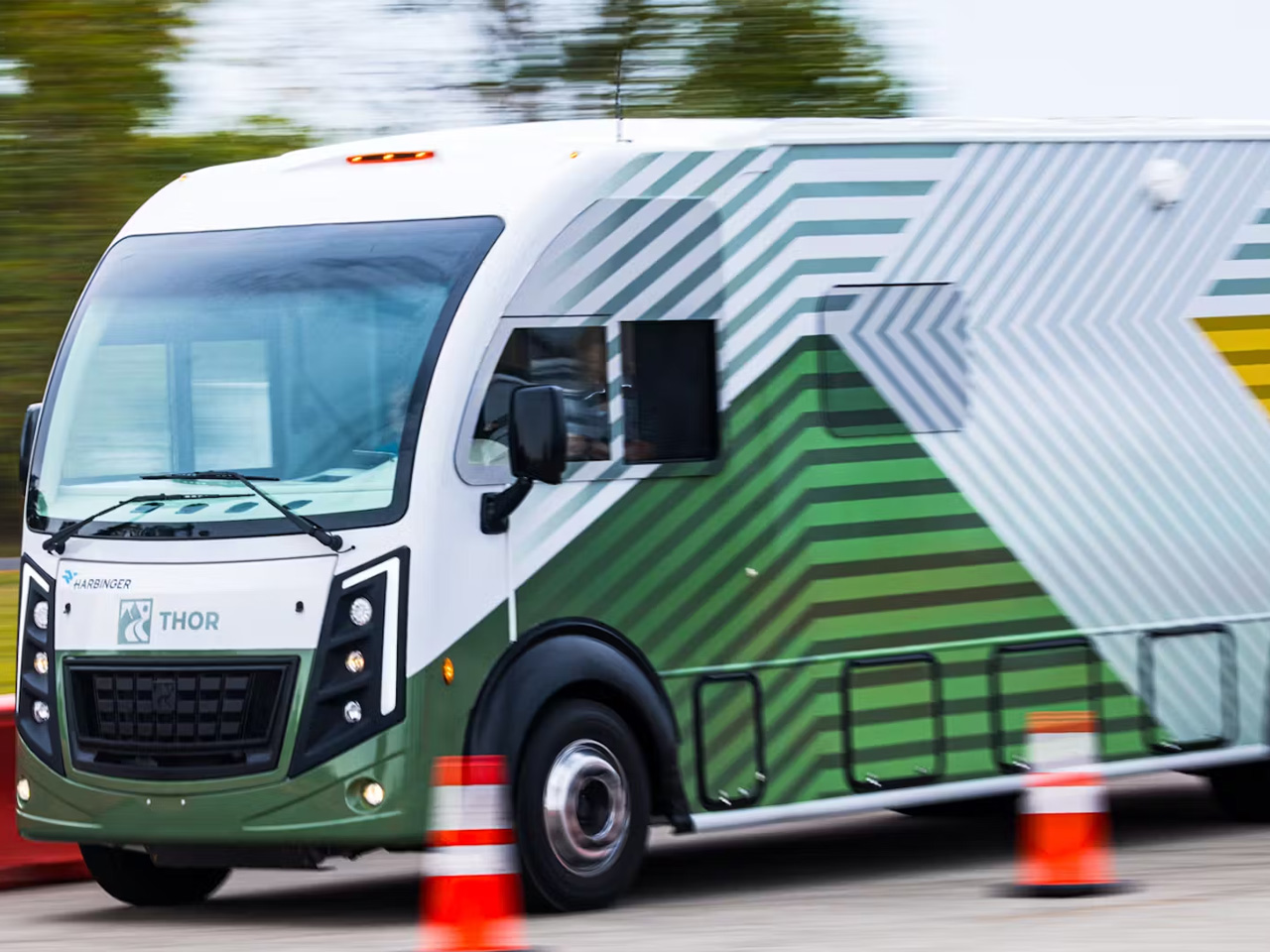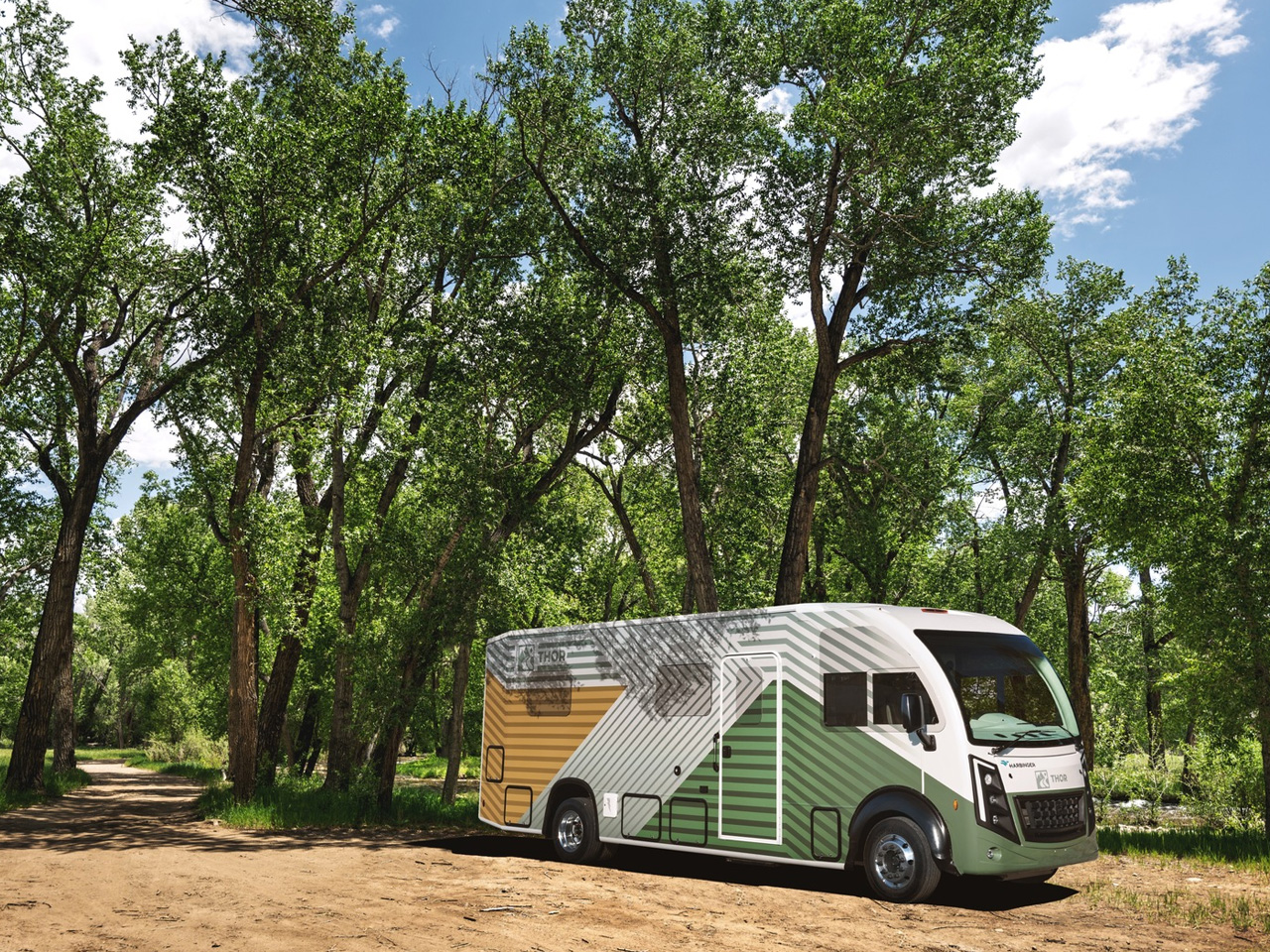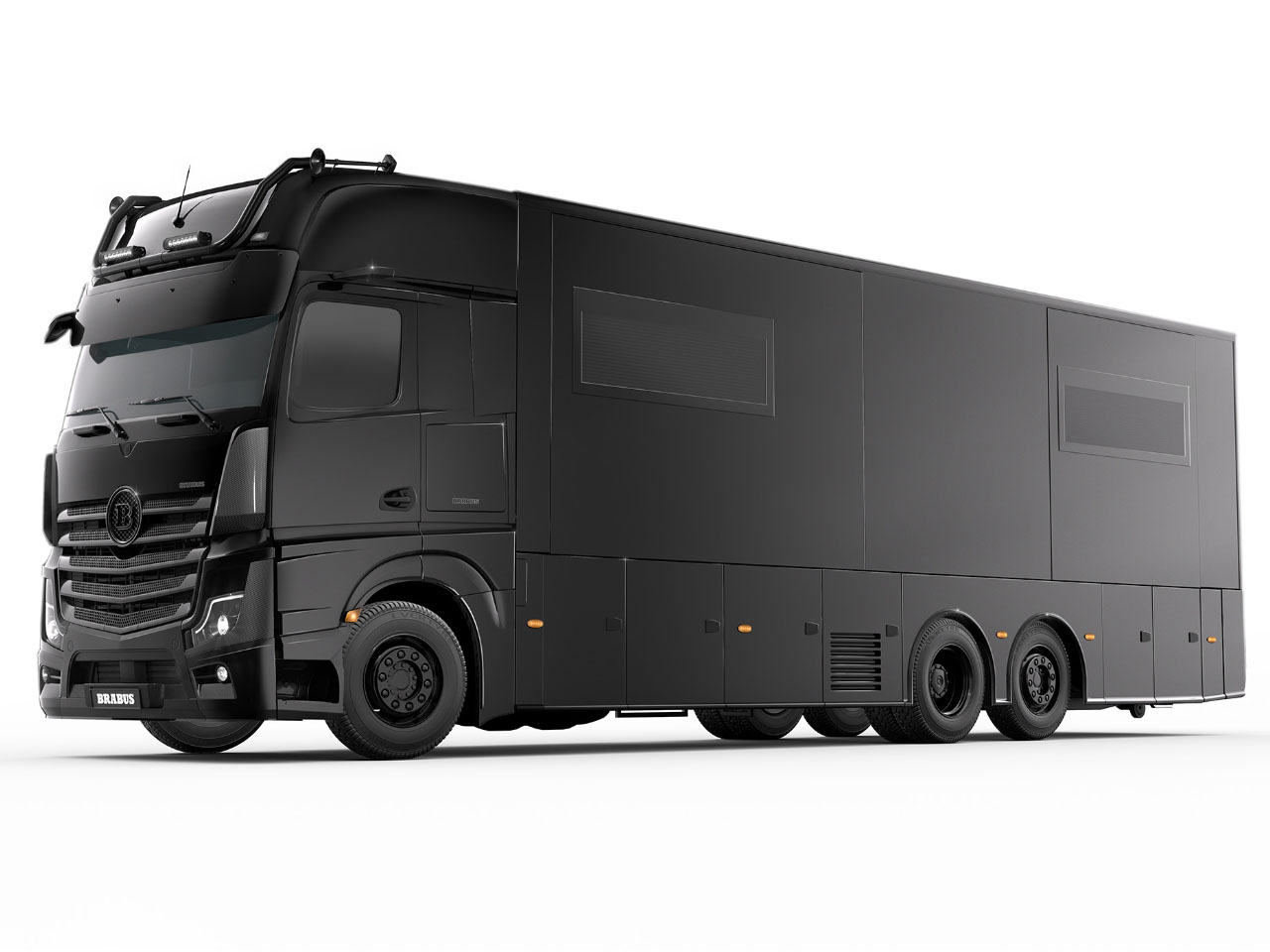
The German high-performance automotive aftermarket tuning company Barbus has many laurels to its name. The marque has been customizing Mercedes and Porsches for the better part of its existence, now it is foraying into the RV market with what’s possibly the most outstanding motorhome on the block. Dubbed Big Boy 1200, the matte-black house on wheels is – as the name suggests – no small machine, it’s a luxe motorhome in the true sense.
Providing residents with 30 square meters (323 square feet) of constant interior space, the Big Boy increases floor space with four slide-outs on either side that expand the area by 15 feet. The interior is nicely laid out with a spacious lounge, a functional kitchen, an interesting bathroom and sleeping space for up to four people.
Designer: Brabus
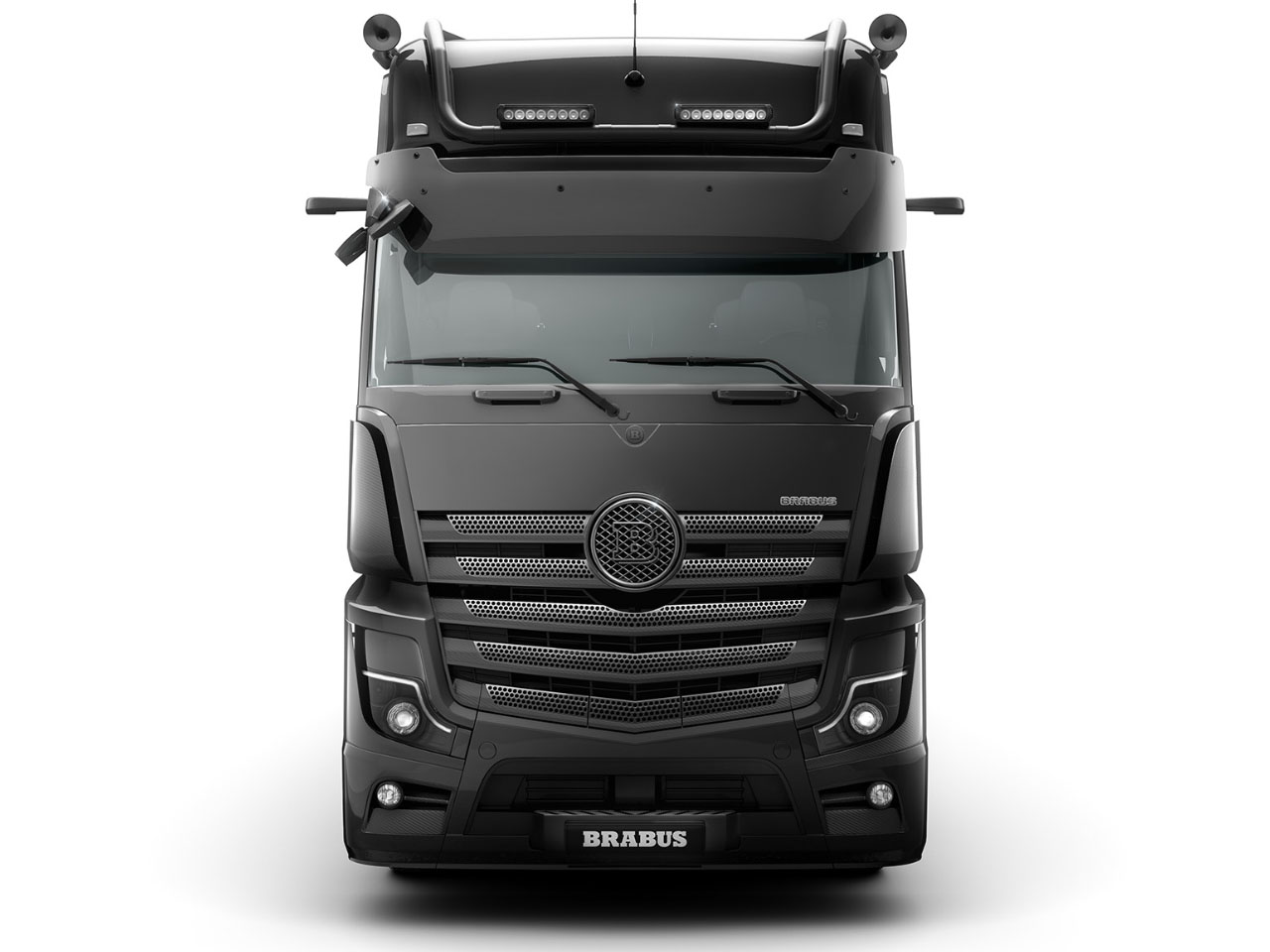
On the outside, the Brabus Big Boy 1200 motorhome measures 12 meters long, which possibly suggests the numeric behind the name. Stationed on a tri-axle chassis, the 26,000kg mobile home, courtesy of its 12.8-liter six-cylinder turbodiesel engine, can run at a top speed of 90kmph with complete stability handled by its hydraulically extendable support. The entire frame is made from galvanized steel, while the interior has been dotted with evident hints of carbon fiber.
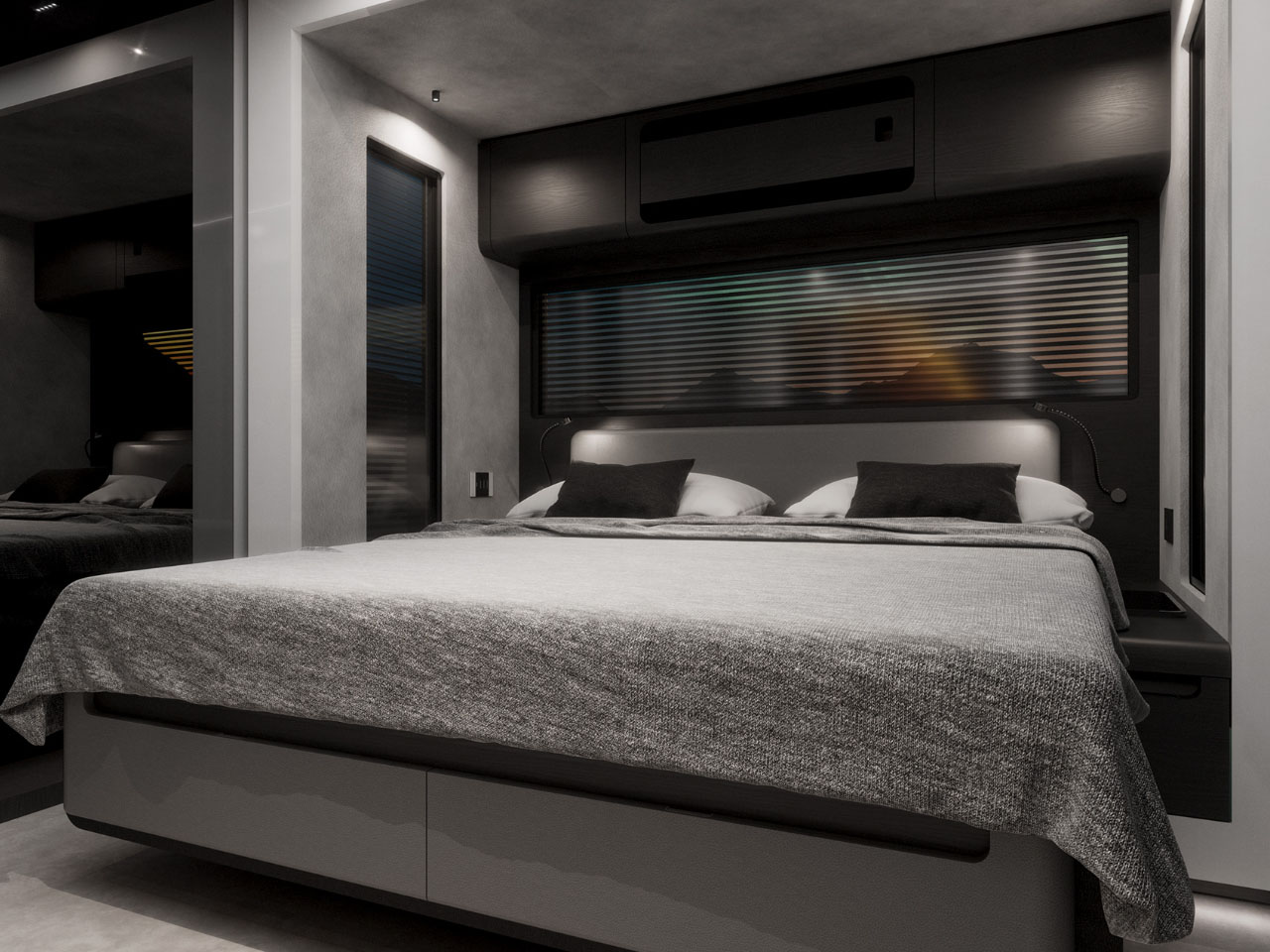
Of course, the Big Boy 1200 is massive and powerful, but these are not its only highlights. The motorhome’s ever-expanding structure, resting on self-adjustable legs, and black interiors are customized choicely for everyday luxury living. Brabus has positioned the motorhome to be low and features steps on the entry that electronically lower from the entry door. The dining table on the entry, behind the driver’s cabin, is where the carbon fiber accents begin to show up, especially in the used black wood for the dining table. The living room is fashioned with customized Brabus leather sofas with branded throw pillows and an entertainment system.
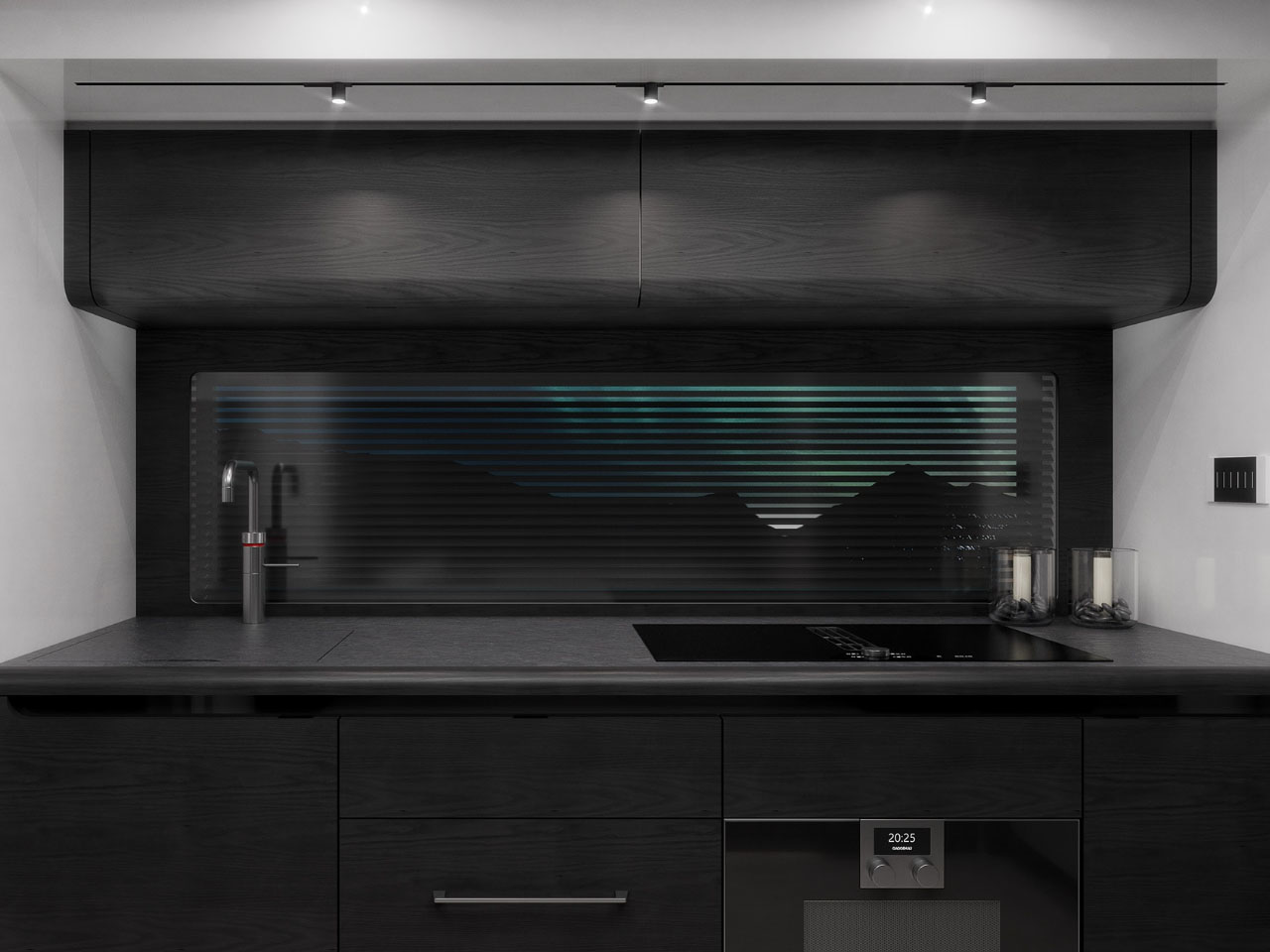
The adjacent kitchen is equipped with a fridge with carbon fiber accents, an induction cooktop, oven, and dishwasher. The bedroom at the rear of the motorhome features a king bed, large closet, wardrobe, expandable work desk with Paola Lenti chair, and a large-screen smart TV. The fascinating second sleeping space is hidden over the driver’s cab. It comprises an electrically lowerable bed cordoned off from the other living quarters by a black-out curtain.
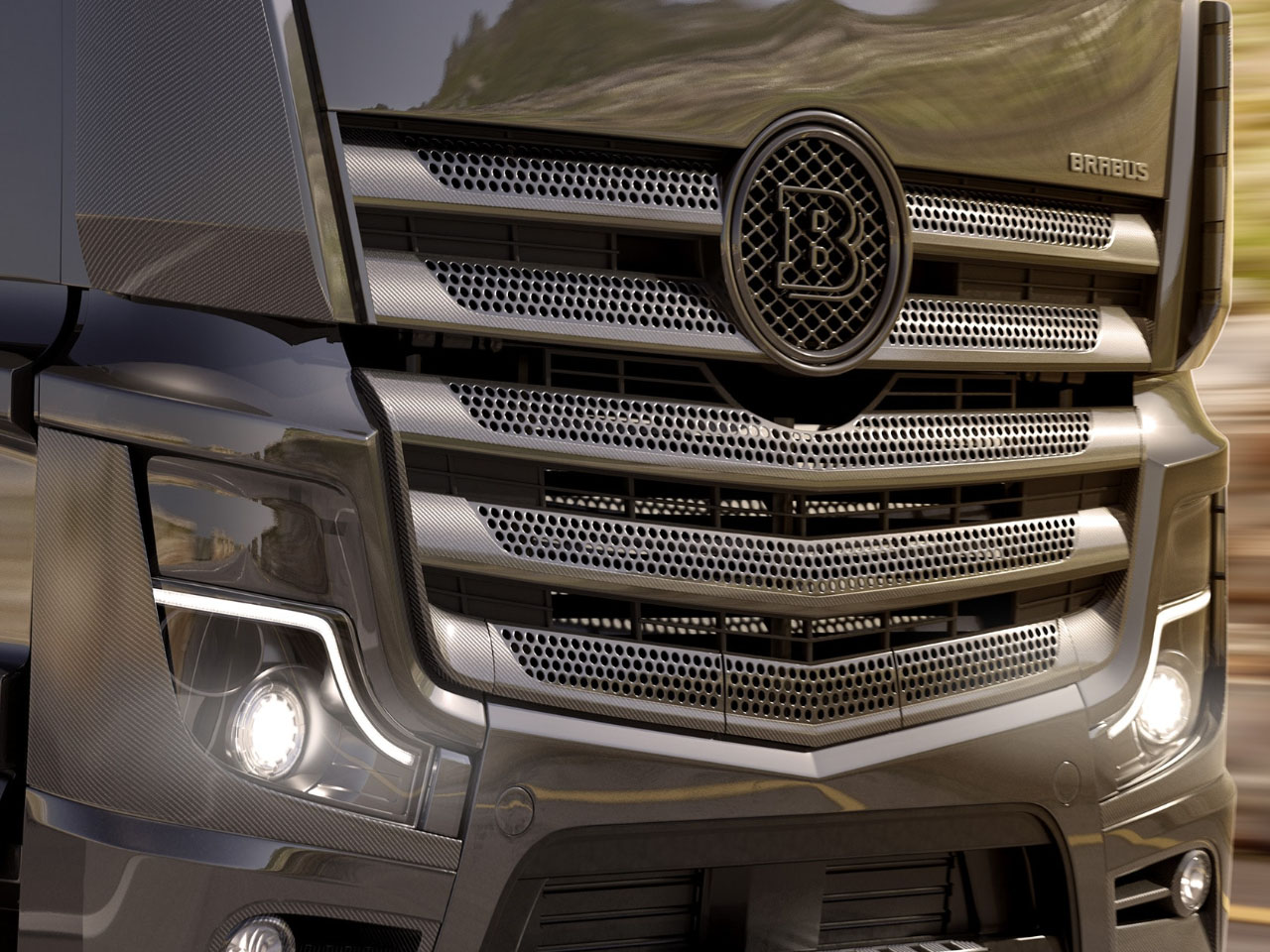
The bathroom of the Big Boy 1200 is located centrally and is a convenient and usable space divided into three sections – open lavatory, rainforest shower floor-to-ceiling natural stone wall, and toilet. Other interesting aspects included are roof-top solar panels, battery, fresh and gray water tanks onboard, Starlink internet, 360-degree camera system, automatic AC, and a host of other smart home features. All this comes in an expensive package: The Big Boy 1200 is priced at $1.5 million by Brabus.
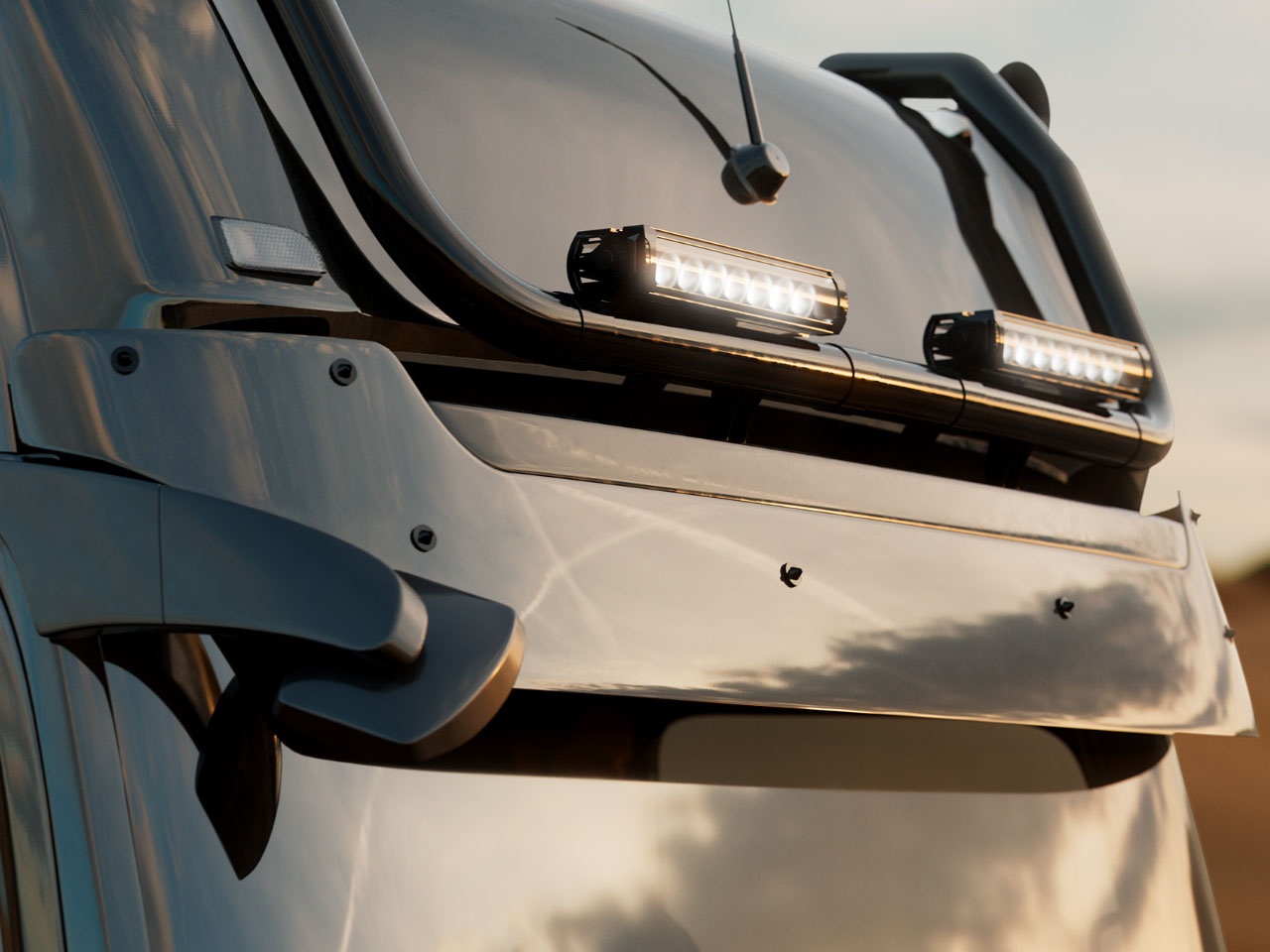
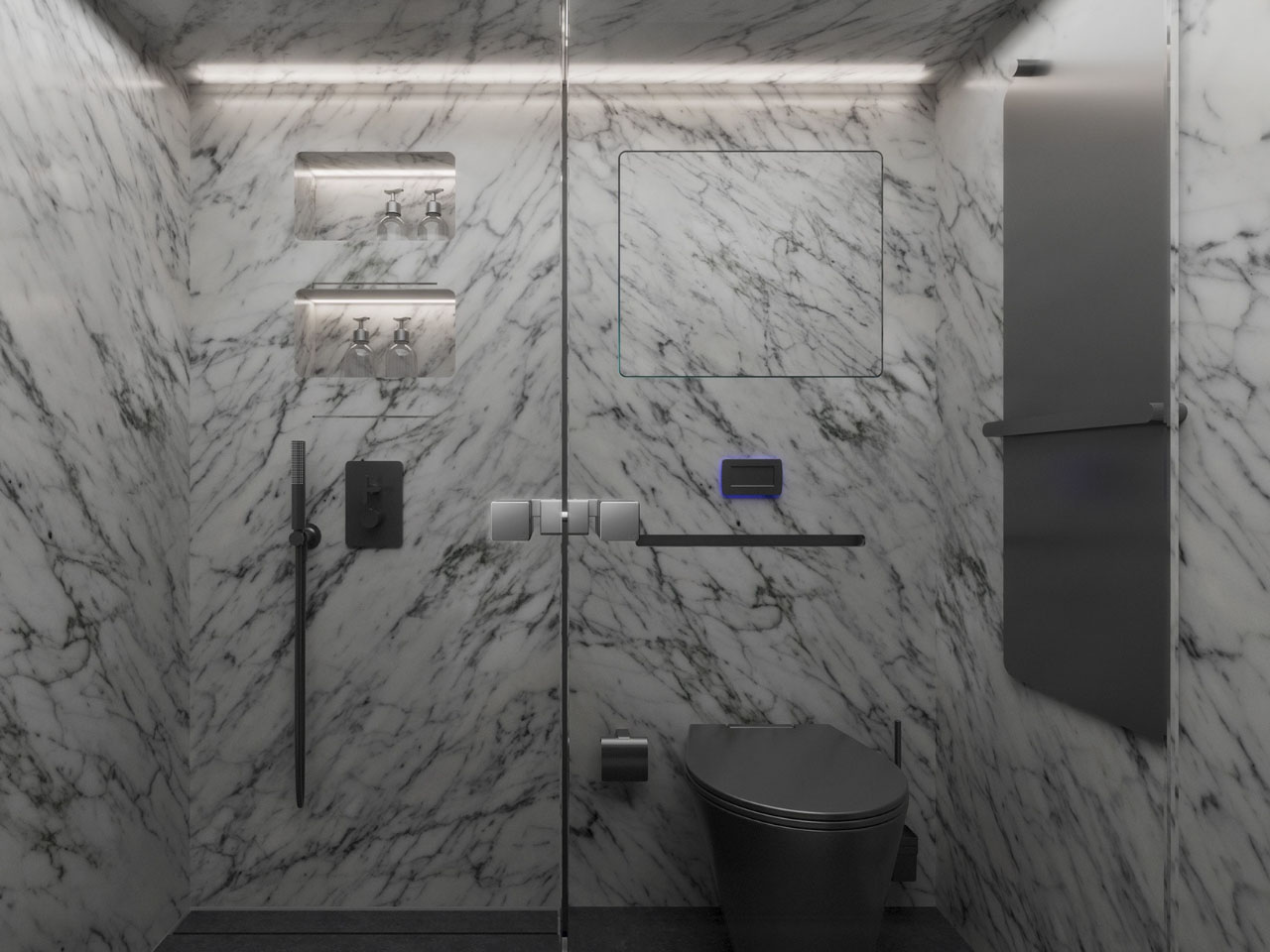
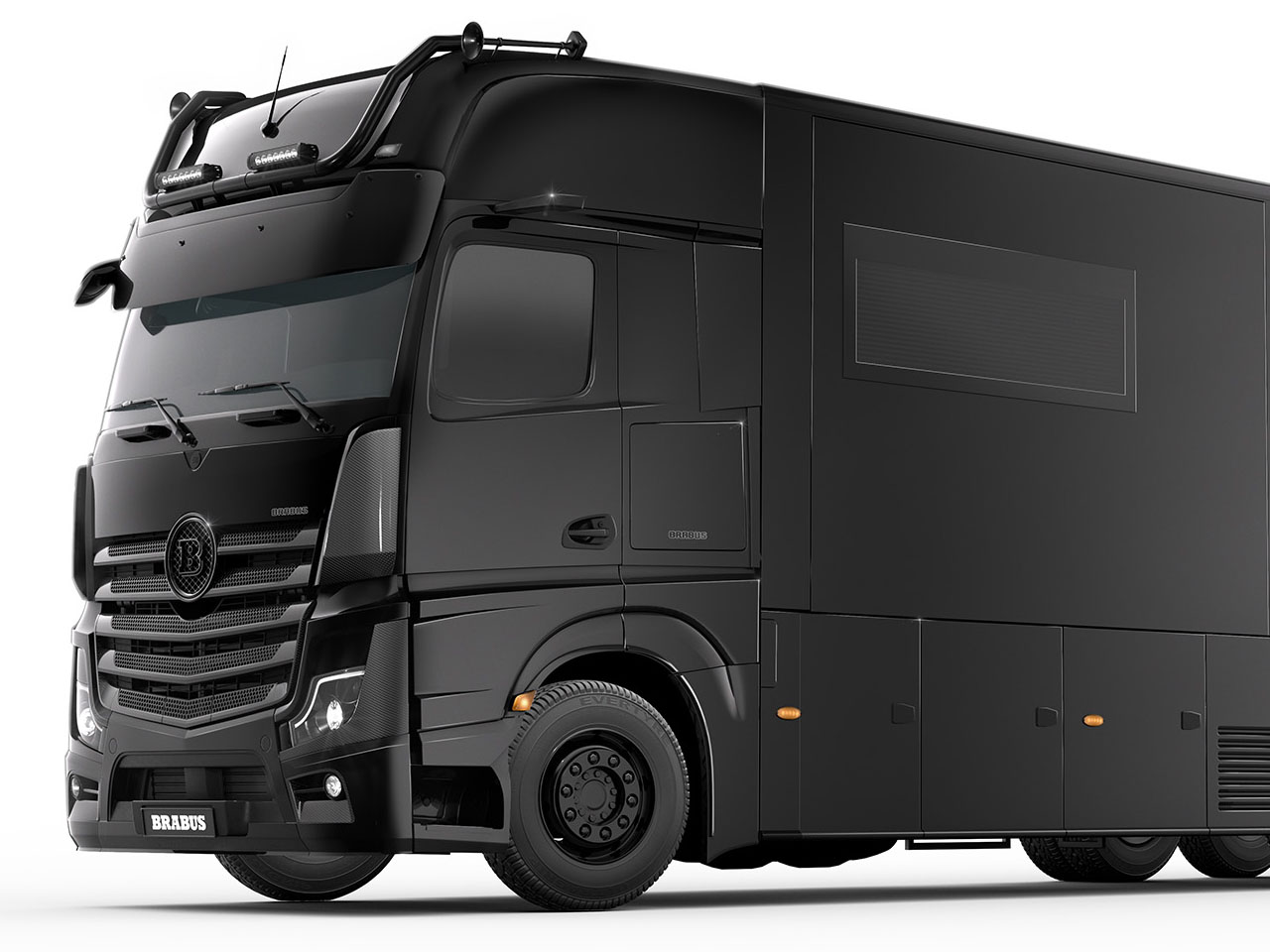
The post Brabus Big Boy 1200 is possibly the most outstanding, feature-packed motorhome out there first appeared on Yanko Design.
